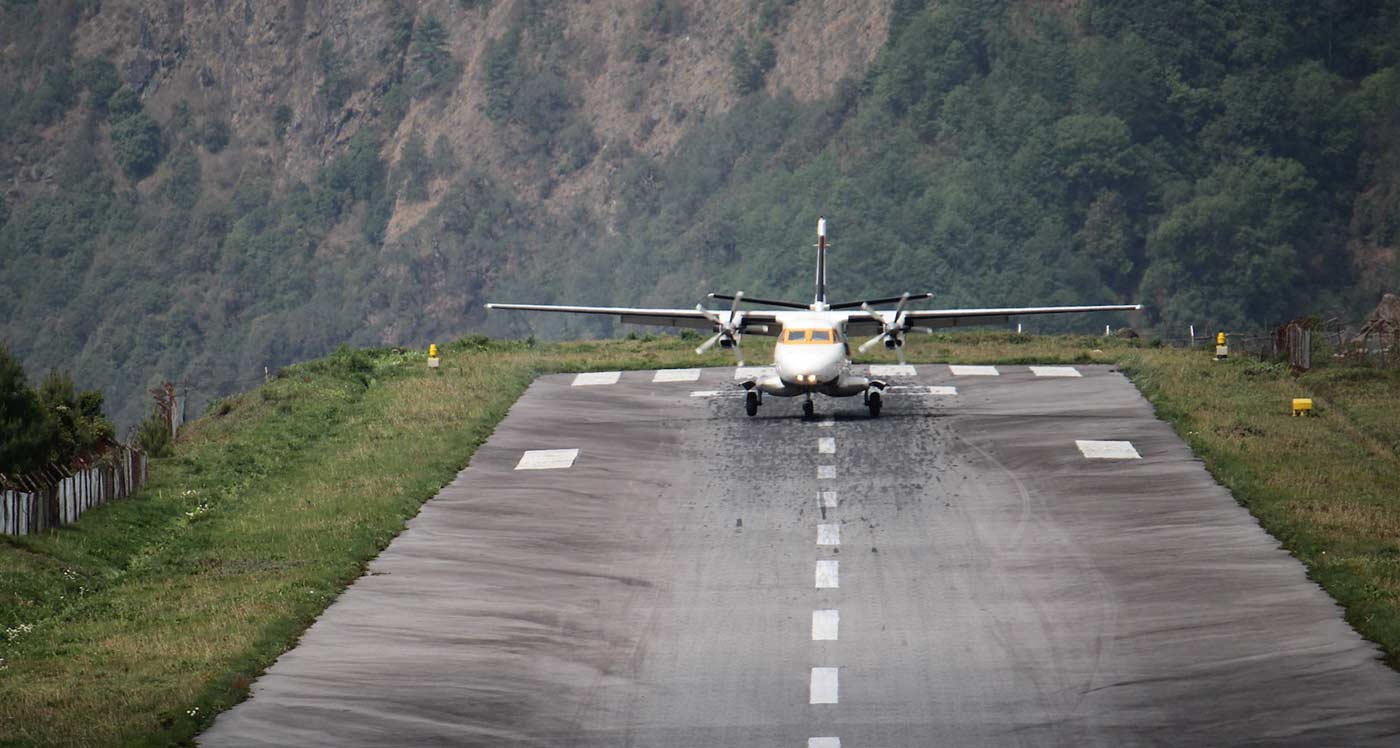Most first time travelers feel overwhelmed trying to plan your Nepal trip and how to Everest Base Camp? With so many options and details to consider, it can be difficult to know where to start. So we asked our expert team to write an article help you find the best way to get to Everest Base Camp.
The most common way to get to Everest Base Camp is by flying from Kathmandu to Lukla and then trekking to the base camp. The flight takes about 30-40 minutes and the trek to reach Everest Base Camp takes about 7 days, covering a distance of approximately 65 (81 miles). Trekkers will pass through villages Monjo, Namche Bazaar, Tengboche, Dingboche, and Gorak Shep before reaching Everest Base Camp.
However, getting to Everest Base Camp is just the beginning of your journey. There are many factors to consider, such as the best time to trek, the necessary permits, and the equipment required. Additionally, there are various trekking routes to choose from, each offering its own unique experiences and challenges. In the following sections, we’ll delve deeper into these topics to help you plan a safe and successful trek to Everest Base Camp. So, keep reading to discover all the essential information you need to know!
Welcome to the most comprehensive and up-to-date guide on reaching Everest Base Camp, the starting point for climbers attempting to summit the world’s highest peak. In this guide, we will provide you with everything you need to know to plan a successful trek, from choosing the best route and preparing physically and mentally, to packing the essentials and minimizing your ecological impact. Our team of experienced trekkers and adventure travel experts have compiled this guide to help you embark on an unforgettable adventure to the heart of the Himalayas.
The Everest Base Camp Trek is a famous and challenging trek that takes you through some of the most stunning landscapes and mountain ranges in the world. The trek is situated in the Everest region of Nepal and takes you up to the base camp of Mount Everest, the highest mountain in the world. The trek is popular among adventure seekers, hikers, and mountain climbers who want to experience the beauty and grandeur of the Himalayan Mountains.
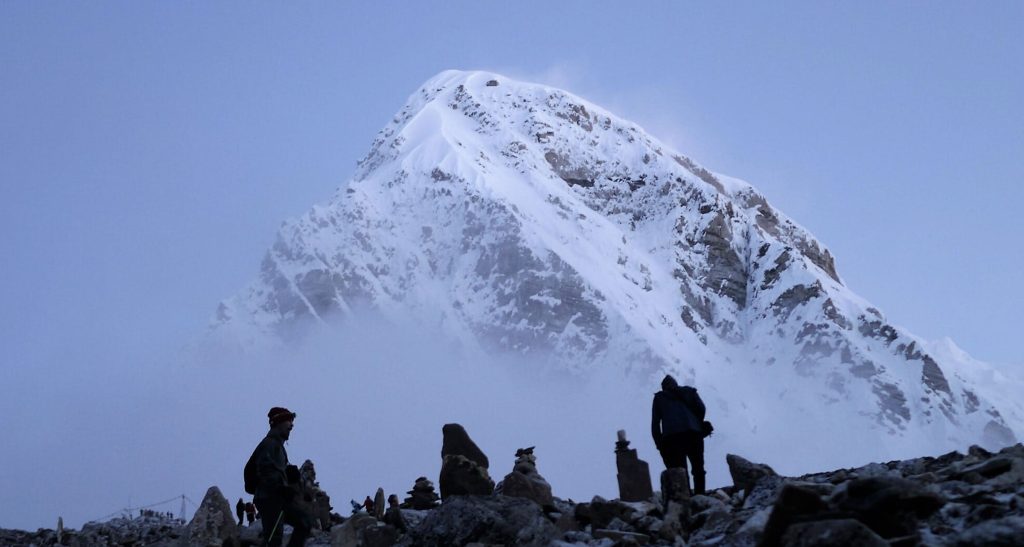
Importance of the Trek
The Everest Base Camp Trek is important for many reasons. It provides an opportunity for travelers to experience the natural beauty and cultural richness of Nepal, as well as to test their physical endurance and mental toughness. The trek also plays an important role in the economy of Nepal by bringing in tourism revenue and providing employment opportunities for locals.
Brief Information about the Region
The Everest region is located in the northeast of Nepal and is part of the Solukhumbu district. The region is home to some of the world’s tallest mountains, including Mount Everest, Lhotse, and Cho Oyu. The region is also home to the Sherpa people, who are known for their mountaineering skills and rich cultural heritage.
Choosing the Best Route for Everest Base Camp Trek

There are two main routes to reach Everest Base Camp, each with its own unique characteristics:
1. The Classic Route (Lukla to Everest Base Camp)
This popular route begins with a thrilling flight to Lukla, then proceeds through Phakding, Namche Bazaar, Tengboche, Dingboche, Lobuche, Gorak Shep, and finally, Everest Base Camp. The trek takes around 12-14 days, with ample opportunity for acclimatization.
2. The Gokyo Lakes Route
This less-traveled route offers stunning views of the Gokyo Lakes and the chance to climb Gokyo Ri for unparalleled panoramas. The trail diverges from the Classic Route at Namche Bazaar, heading towards Dole, Machhermo, and Gokyo before rejoining the Classic Route at Lobuche. This trek takes about 15-17 days.
Everest Base Camp Trek Preparation
Physical and Mental Preparation
A successful Everest Base Camp trek requires both physical fitness and mental resilience. Here are some tips to prepare yourself for the challenges ahead:
- Engage in regular cardiovascular exercise, such as running, swimming, or cycling, for at least 3-4 months prior to your trip. Incorporate strength training, focusing on your legs, core, and upper body, and include hiking with a loaded backpack to build endurance.
- Familiarize yourself with the trek’s challenges, such as high altitudes, rough terrain, and potential weather changes. Embrace the idea of being disconnected from everyday life and practice mindfulness and meditation to help cultivate mental strength and adaptability.
Equipment and Gears Required

Trekkers need to have proper trekking equipment and gear to ensure their safety and comfort during the trek. Some of the essential items include trekking boots, warm clothing, sleeping bags, trekking poles, and a backpack. It is also important to carry a first aid kit, sunscreen, and a water purification system. Below, we have listed the essential items you need to pack on you way to reach EBC Nepal.
Packing Essentials
Packing the right gear is crucial for a successful trek. Here’s a list of essentials to include in your backpack:
- Clothing: Choose moisture-wicking, quick-drying, and breathable base layers for optimal comfort. Layer your clothing with insulation layers and an outer shell to adapt to changing temperatures and weather conditions. Pack a waterproof jacket and pants, trekking pants, warm gloves, and a sun hat. The region’s climate and terrain can be unpredictable, so being prepared with appropriate clothing is essential.
- Footwear: Invest in sturdy, well-broken-in hiking boots that provide good ankle support and grip. Wear trekking socks to prevent blisters and bring sandals for evening use to let your feet breathe.
- Accessories: Sunglasses, trekking poles, a water bottle or hydration system, and a waterproof backpack cover are all important to have on hand.
- Personal items: Sunscreen, lip balm, insect repellent, personal medications, and a basic first-aid kit are essential for maintaining personal hygiene and addressing common ailments. Include water purification tablets or a water filter to ensure safe drinking water throughout the trek.
- Electronics: Headlamp, spare batteries, portable solar charger, and a camera will help you navigate and capture memories.
- Travel Documents:
- Passport: Ensure your passport is valid for at least six months beyond your planned stay and has enough empty pages for visas and entry/exit stamps.
- Visas: Check if you require a visa for entry into Nepal and apply accordingly.
7. Permits: Obtain necessary trekking permits before starting your trek, such as the TIMS (Trekkers’ Information Management System) card and Sagarmatha National Park Entry Permit.
8. Travel Insurance: Purchase comprehensive travel insurance that covers emergency evacuations, medical treatment, and trip cancellations.
9. Cash: Carry enough cash, preferably in Nepalese Rupees, to cover expenses in remote areas where ATMs may not be available.
Getting to Everest Base Camp - FAQ.
How to Get to Everest Base Camp from Kathmandu?
The most popular way to get to Everest Base Camp is to take a flight from Kathmandu to Lukla, a small town in the Khumbu region. From Lukla, trekkers can begin their journey to Everest Base Camp. The flight from Kathmandu to Lukla takes approximately 35 minutes and offers breathtaking views of the Himalayas.
Can You Drive to Everest Base Camp?
It is not possible to drive directly to Everest Base Camp. The nearest town to Everest Base Camp is Lukla, and the only way to get there is by flying from Kathmandu. From Lukla, trekkers can either hike or take a helicopter to reach Everest Base Camp.
How to Travel to Everest Base Camp?
The most common way to travel to Everest Base Camp is by trekking. Trekkers can choose from a variety of routes, each offering unique scenery and challenges. Alternatively, travelers can take a helicopter tour to Everest Base Camp, which offers stunning aerial views of the region. However, this option is more expensive and less physically challenging than trekking.
Everest Base Camp Trek Information - FAQ
Everest Base Camp Trek Distance
The distance of the Everest Base Camp Trek varies depending on the route taken. The most common route is approximately 130 km (81 miles) round trip. This distance can be covered in 12-14 days, including acclimatization and rest days.
What is Everest Base Camp Height?
The height of Everest Base Camp is 5,364 meters (17,598 feet) above sea level. The trek also takes you to other high-altitude locations, such as Kala Patthar (5,643 meters/18,514 feet) and Cho La Pass (5,420 meters/17,782 feet).
How Long to Get to Everest Base Camp?
The time it takes to get to Everest Base Camp depends on the trekker’s pace, route, and acclimatization schedule. The average time to complete the trek is 12-14 days. However, some trekkers may take longer to acclimatize to the high altitude, while others may be able to complete the trek in less time.
Everest Base Camp Trek Difficulty
The Everest Base Camp Trek is considered a moderate to difficult trek, due to its high altitude, unpredictable weather, and steep and rocky terrain. Trekkers need to be physically fit and mentally prepared to face the challenges of the trek. Altitude sickness is also a common concern, and trekkers need to acclimatize properly to avoid serious health problems.
Best Time for Everest Base Camp Trek
The best time to trek to Everest Base Camp is from March to May and from September to November. These months offer the best weather and visibility, making it easier to enjoy the stunning mountain views. The monsoon season (June to August) and the winter season (December to February) are not recommended for trekking due to heavy rain and snow.
A Detailed Itinerary of Everest Base Camp Trek
Here’s a sample itinerary for the Classic Route to Everest Base Camp, including acclimatization days and points of interest along the way:
Day 1: Flight to Lukla (2,860m) and Trek to Phakding (2,610m)
Duration: 3-4 hours
The trek begins with a scenic flight from Kathmandu to Lukla, which offers views of the breathtaking mountain landscape. The trek to Phakding descends through traditional Sherpa villages, and you will cross the Dudh Koshi River multiple times on suspension bridges. The main risk on this day is adjusting to the altitude, so take it slow and stay well-hydrated. An optional activity includes visiting a local monastery or exploring the culture of nearby villages.
Day 2: Phakding to Namche Bazaar (3,440m)
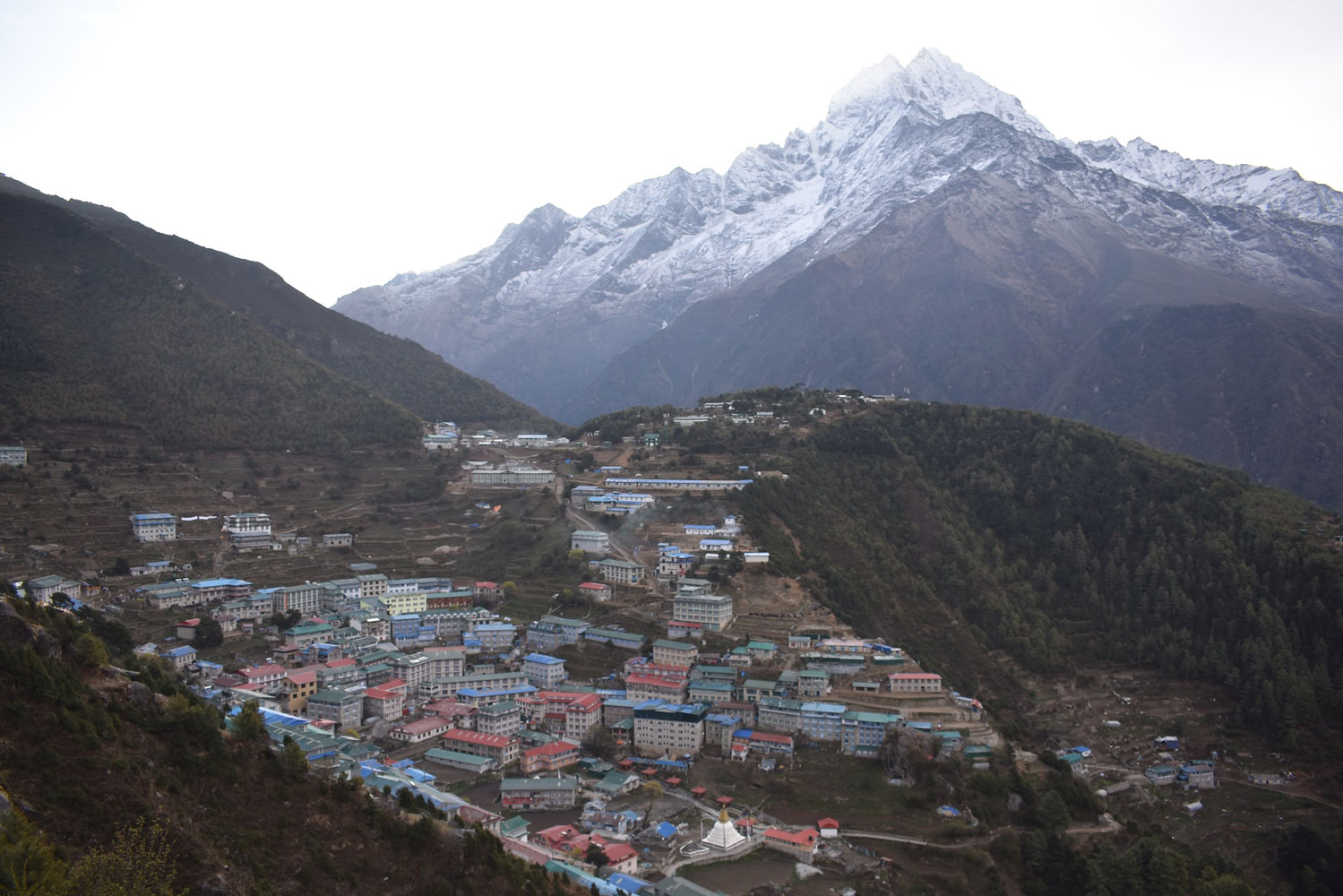
Duration: 5-6 hours
This day involves a steep ascent through pine and cedar forests to reach the bustling Sherpa town of Namche Bazaar. Be cautious of slippery terrain, especially during the monsoon season. In Namche Bazaar, explore the local market and interact with the Sherpa community to learn about their rich culture and history.
Day 3: Acclimatization Day in Namche Bazaar
Duration: 3-4 hours
To acclimatize, hike up to the Everest View Hotel or the Sherpa Culture Museum for panoramic views and cultural experiences. This will help your body adjust to the altitude and minimize the risk of altitude sickness.
Day 4: Namche Bazaar to Tengboche (3,860m)
Duration: 5-6 hours
The trek to Tengboche passes through rhododendron forests and crosses the Imja Khola River. Watch for unstable terrain near the river crossing. Upon arrival in Tengboche, visit the famous Tengboche Monastery for daily prayer ceremonies and stunning views of Ama Dablam.
Day 5: Tengboche to Dingboche (4,410m)
Duration: 5-6 hours
The trail takes you through the Imja Valley, passing Pangboche and its ancient monastery. In Dingboche, be cautious of the increasing altitude and potential for altitude sickness. You can visit the local monastery or engage with the Sherpa community to learn about their traditions.
Day 6: Acclimatization Day in Dingboche
Duration: 4-5 hours
Hike to Nangkartshang Peak or explore the surrounding areas for breathtaking views of Makalu, Lhotse, and Ama Dablam. Remember to stay well-hydrated and take it slow to help your body adjust to the altitude.
Day 7: Dingboche to Lobuche (4,940m)
Duration: 5-6 hours
The trail climbs steeply towards the Khumbu Glacier, so be cautious of the rocky terrain and potential for loose rocks. En route, you’ll pass the Everest climbers’ memorial site. In Lobuche, visit the local teahouses and interact with the Sherpa community.
Day 8: Lobuche to Gorak Shep (5,164m) and Everest Base Camp (5,364m)
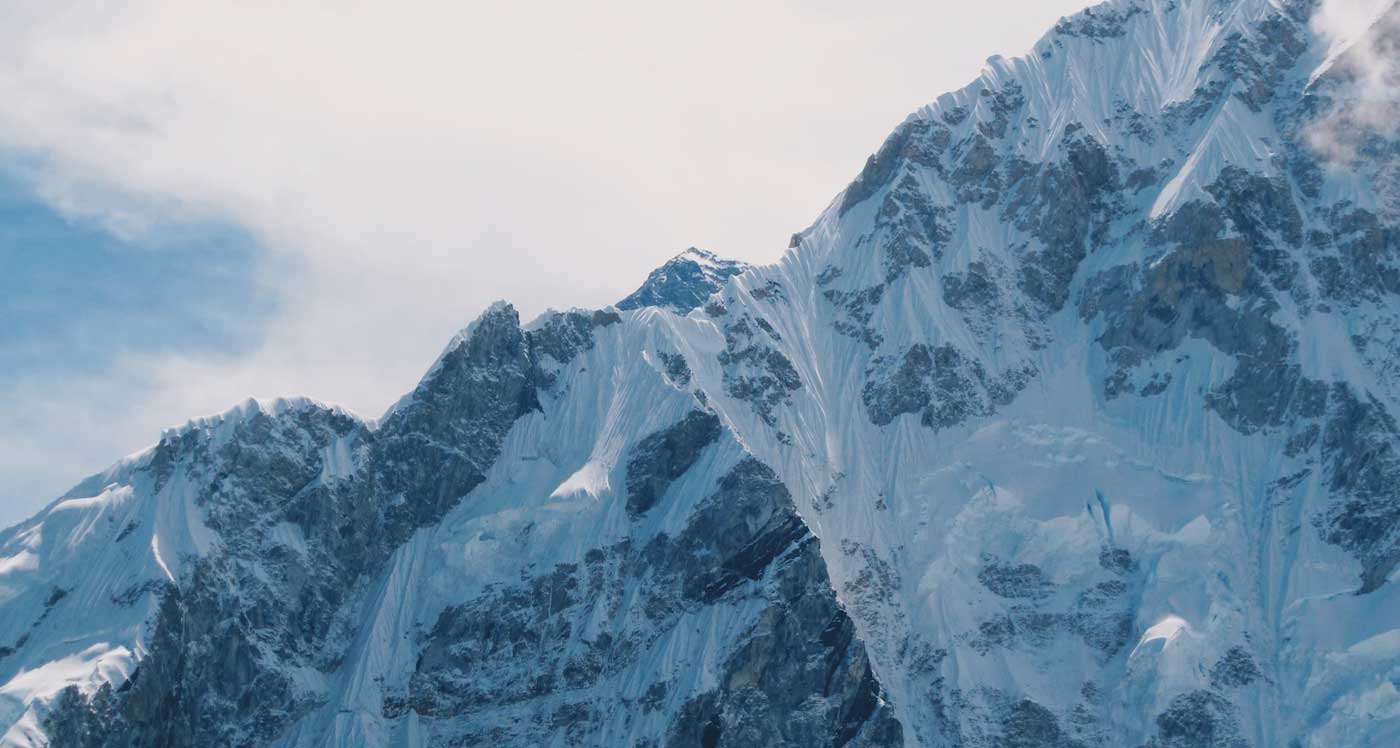
Duration: 7-8 hours
This challenging day rewards you with views of the Khumbu Icefall and a chance to stand at the foot of the world’s highest mountain. Be prepared for challenging terrain, cold weather conditions, and potential altitude-related issues.
Day 9: Climb Kala Patthar (5,550m) and Trek to Pheriche (4,240m)
Duration: 7-8 hours
Climb Kala Patthar early in the morning for a spectacular sunrise over Everest. Descend to Gorak Shep and continue to Pheriche, passing through Lobuche and Thukla. Be cautious of the steep descent and loose terrain.
Day 10-12: Return Trek to Lukla
Duration: 6-8 hours per day
Retrace your steps through Tengboche, Namche Bazaar, and Phakding, enjoying the Himalayan landscapes and Sherpa culture along the way. Be mindful of fatigue and stay well-hydrated as you descend.
Day 13: Flight from Lukla to Kathmandu
Fly back to Kathmandu and celebrate your successful trek to Everest Base Camp. On the return flight, enjoy a final glimpse of the stunning Himalayan landscape.
Acclimatization and Altitude Sickness
Proper acclimatization is essential to prevent altitude sickness. Follow these guidelines to minimize your risk of altitude sickness:
- Climb high, sleep low: Hike to a higher altitude during the day, but sleep at a lower altitude to allow your body to adapt.
- Ascend gradually: Don’t rush your ascent. Stick to a reasonable itinerary that allows for rest, acclimatization days, and proper nutrition. Rest is crucial for recovery, and a balanced diet rich in carbohydrates, proteins, and healthy fats will provide the necessary energy for your body to adjust.
- Stay hydrated: Drink at least 3-4 liters of water daily to maintain proper hydration and help your body cope with altitude changes.
- Know the symptoms: Familiarize yourself with the signs of altitude sickness, which include headaches, dizziness, nausea, and difficulty breathing. Descend immediately if symptoms worsen.
- Consider medication: Altitude sickness medications like Diamox can help alleviate symptoms. Consult a medical professional before starting any medication and carry it with you during the trek in case symptoms arise.
Remember, the importance of rest and nutrition during acclimatization days cannot be overstated. These factors, combined with proper hydration and adherence to a gradual ascent plan, will significantly reduce your risk of altitude sickness. Always consult a medical professional if you have concerns about your health or the use of altitude sickness medications.
Safekeeping Recommendations:
Keep your essential documents in a waterproof and secure pouch. Carry photocopies of important documents separately and store digital copies in a secure cloud or email account as a backup.
By packing appropriate clothing and footwear, prioritizing personal hygiene and first aid, and ensuring you have all necessary travel documents, you’ll be well-prepared for a safe and enjoyable trekking experience.
Costs and Budgeting of EBC Trek
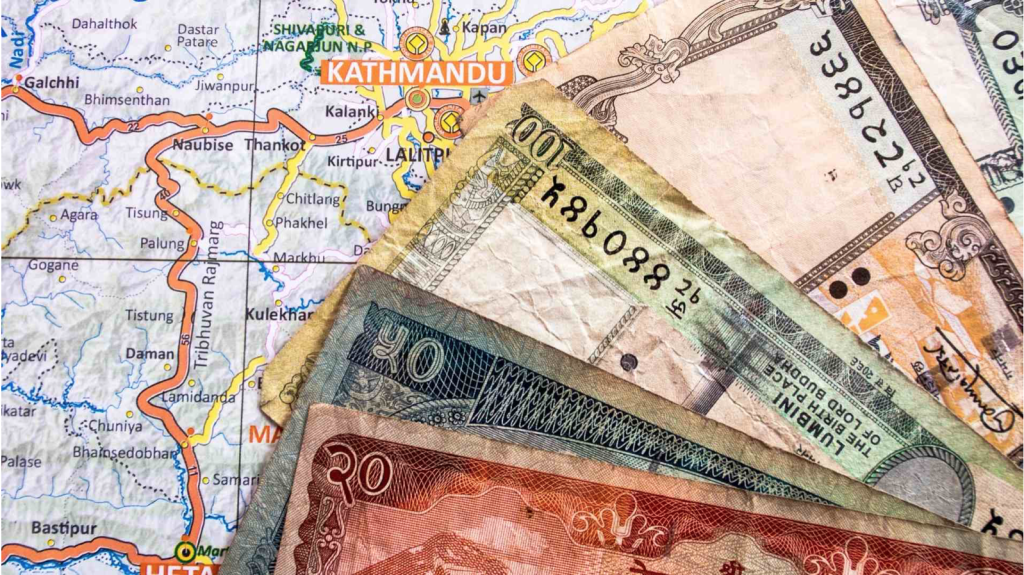
Everest Base Camp trek cost will depend on various factors, including the route, accommodations, and guiding services. On average, expect to spend between $1,200 and $5,000 per person for a 12-14 day trek. Here’s a breakdown of the costs into various categories:
- Accommodations: Costs can range from $5 to $30 per night, depending on whether you choose basic teahouses or more luxurious lodges.
- Food: Meals typically cost between $3 and $10 per meal at local teahouses. Dining at more upscale lodges will increase the cost.
- Transportation: Round-trip flights from Kathmandu to Lukla can cost between $300 and $350. Local buses or jeeps can be used to reach trailheads if you choose an alternative route, which may be cheaper.
- Permits: TIMS card costs around $20, and the Sagarmatha National Park Entry Permit is approximately $30.
- Equipment rental: Renting gear in Kathmandu or Namche Bazaar can cost between $1 and $10 per item per day, depending on the quality and type of equipment.
- Tips for guides and porters: Although tipping is discretionary, it is customary to tip your guides and porters. A suggested amount is 10-15% of your total trek cost, which can be split among the staff according to their roles.
To save money during the trek, consider the following tips:
- Choose budget-friendly accommodations: Opt for basic teahouses over luxurious lodges to save on accommodation costs. These teahouses often offer a more authentic and immersive experience.
- Dine at local eateries: Enjoy meals at local teahouses and avoid upscale lodges. This not only saves money but also allows you to experience authentic local cuisine.
- Rent or borrow equipment: Renting equipment in Kathmandu or Namche Bazaar can be more cost-effective than purchasing new gear. You can also consider borrowing equipment from friends or family members who have previously trekked in the region.
By carefully planning and budgeting for your Everest Base Camp trek, you can enjoy an unforgettable adventure without breaking the bank.
VIII. Everest Base Camp Trek Conclusion
In conclusion, the Everest Base Camp Trek is a challenging and rewarding trek that offers stunning mountain views, cultural richness, and a sense of accomplishment for completing one of the world’s most famous treks. The trek requires proper preparation, including physical and mental training, acclimatization, and proper equipment and gear. It is recommended to trek with a licensed guide or porter for safety and convenience.
There are several popular routes to Everest Base Camp, each offering unique scenery and challenges. The most common route is the Lukla to Everest Base Camp Trek, but other routes, such as the Phaplu Everest Base Camp Trek and the Jiri to Everest Base Camp Trek, are also popular options.
For those who prefer not to trek, the Everest Base Camp Helicopter Tour offers stunning aerial views of the region. The cost of the trek varies depending on the itinerary, route, and level of comfort, but on average, it can cost between $1,000 and $2,000 USD per person.
Obtaining Necessary Permits
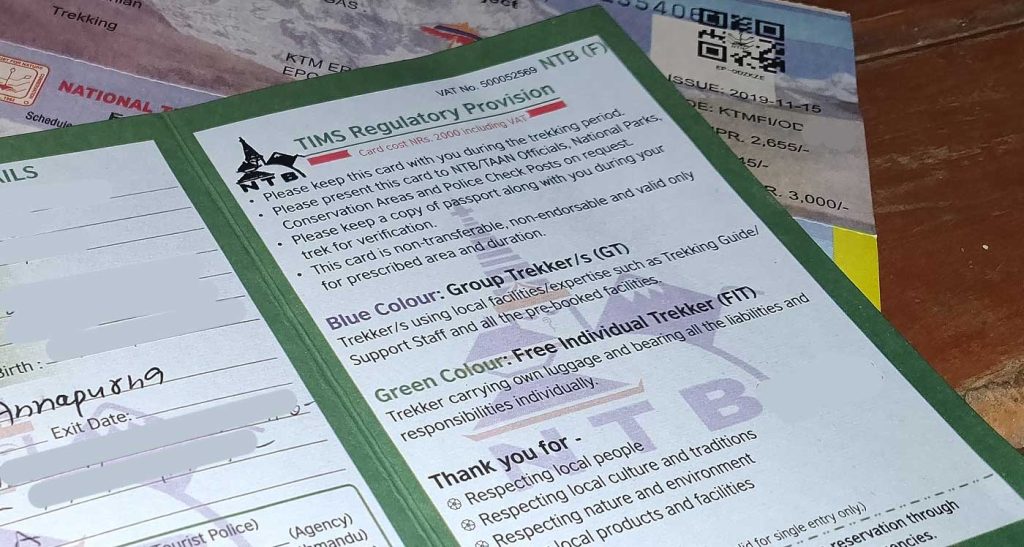
You’ll need two permits for the Everest Base Camp trek:
- Sagarmatha National Park Entry Permit
- Khumbu Pasang Lhamu Rural Municipality Permit
Here’s a step-by-step guide to obtaining these permits, along with application processes, fees, and required documentation:
Sagarmatha National Park Entry Permit:
- Obtain this permit either at the park entrance in Monjo or at the Nepal Tourism Board office in Kathmandu.
- The cost is NPR 3,000 (approximately $30) per person.
- Required documentation: A copy of your passport and two passport-sized photos.
- There are no seasonal restrictions or quotas for this permit.
Khumbu Pasang Lhamu Rural Municipality Permit:
- This permit can be acquired in Lukla or Namche Bazaar.
- The cost is NPR 2,000 (approximately $20) per person.
- Required documentation: A copy of your passport and two passport-sized photos.
- There are no seasonal restrictions or quotas for this permit.
In addition to these permits, please ensure that you have a valid visa for Nepal, which can be obtained either on arrival at the Tribhuvan International Airport in Kathmandu or at a Nepalese embassy or consulate in your home country.
It’s essential to note that there are no specific quotas or seasonal limitations on permits for the Everest Base Camp trek. However, it’s always best to check for updates on permit requirements before embarking on your journey. You can consult the Nepal Tourism Board website or contact your trekking agency for the most up-to-date information.
Nepal Tourism Board Website: https://ntb.gov.np/
Responsible Trekking and Ecological Impact
Responsible Trekking and Ecological Impact
Minimize your ecological footprint and respect local customs by following these responsible trekking practices:
- Pack it in, pack it out: Carry all your trash with you and dispose of it properly at designated waste facilities. Use reusable water bottles and food containers to minimize waste and practice “leave no trace” principles.
- Conserve water: Use water sparingly and avoid contaminating water sources with soap or other chemicals. Consider using biodegradable soap and carrying a portable water filter to reduce reliance on single-use plastic bottles.
- Respect wildlife: Keep a safe distance from animals and avoid feeding them. Admire wildlife from a distance and let them go about their natural behaviors undisturbed.
- Support local communities: Hire local guides, porters, and purchase goods and services from local businesses. This not only helps the local economy but also ensures that your tourism dollars contribute to the well-being of the communities you visit.
- Follow trail etiquette: Yield to porters and yaks, and greet fellow trekkers and villagers with a smile and a “Namaste.” Be respectful of others on the trail and maintain a friendly atmosphere.
- Respect local customs and cultural sites: Learn about local traditions and customs before your trek, and dress modestly to respect cultural norms. Seek permission before taking photographs of people or religious sites, and follow guidelines when visiting sacred places.
By practicing responsible trekking, you’ll minimize your ecological impact, preserve the natural beauty of the region, and support the well-being of local communities. Engaging in ethical tourism, including employing local guides and porters and patronizing local businesses, ensures that your journey has a positive impact on the people and places you encounter.
Hiring a Reputable Trekking Agency
Choosing the best trekking agency in Nepal
Selecting among the best trekking company in Nepal is crucial for a safe and enjoyable journey to Everest Base Camp. A reliable agency will provide you with experienced guides and porters, handle logistics, and ensure your safety and comfort throughout the trek. Here are some criteria to consider when choosing a trekking agency:
- Experience: Look for agencies with a proven track record and years of experience organizing treks in the Everest region. Experienced agencies are more likely to have knowledgeable guides and a well-planned itinerary.
- Safety record: Research the agency’s safety record, including their approach to acclimatization, altitude sickness prevention, and emergency protocols. A reputable agency will prioritize your safety and have a solid plan in place to address any issues that may arise during the trek.
- Client testimonials: Read reviews and testimonials from previous clients to gauge the quality of the agency’s services. Look for feedback on the guides, accommodations, food, and overall trekking experience.
- Commitment to responsible tourism practices: Choose an agency that promotes responsible trekking, such as minimizing environmental impact, supporting local communities, and treating porters and guides fairly.
- Transparent pricing: Reputable agencies will provide a clear breakdown of costs and inclusions, ensuring you know exactly what you’re paying for and avoiding any hidden fees.
To research and compare different trekking agencies, consider the following resources:
- Online forums: Websites like TripAdvisor and Lonely Planet’s Thorn Tree forum are excellent places to read reviews, ask questions, and gather recommendations from fellow trekkers.
- Travel blogs: Travel blogs often provide in-depth accounts of personal experiences with trekking agencies, as well as tips and advice on selecting the right one for your needs.
- Social media: Join Facebook groups dedicated to Everest Base Camp treks or follow hashtags on Instagram to find recommendations and real-life experiences from other travelers.
- Word of mouth: Reach out to friends, family, or acquaintances who have completed the Everest Base Camp trek for their insights and recommendations.
By thoroughly researching and selecting a reputable trekking agency, you can ensure a safe, enjoyable, and memorable Everest Base Camp adventure.
Personal Experiences and Testimonials.
For this section, we have selected one of the most helpful resources we’ve come across as an Experience Video.
Supportive Video: One of the most helpful resources I’ve come across is Steff Morris’s 10-minute video guide on everything you need to know to complete the Everest Base Camp trek in Nepal. In this article, I’ll provide an overview of Morris’s guide, along with additional tips and advice to help you prepare for the trek of a lifetime.
About the Creator
Steff Morris is a travel content video maker/editor based in Wales(UK) who shares his experiences and travel tips on his channel. His videos are informative and entertaining, providing practical advice for travelers of all levels and have gotten over a 100,000 views in total as of March 2023. Please head on to his channel below if you are into this type of content.
Resource: https://www.youtube.com/@steffmorris/, https://www.youtube.com/watch?v=vIgIbgDz8oE
Key Takeaways
- The best time to trek to Everest Base Camp is between February and May or October to December.
- Bring essential items such as a lightweight jacket, sturdy shoes, a sleeping bag, and medication for an upset stomach.
- Altitude sickness is a concern, so drink plenty of water and take medication to avoid symptoms.
- Accommodation along the trek is mainly basic but comfortable teahouses.
- Guided treks provide safety and convenience, but solo treks can be less expensive and more flexible.
- Photographers and video makers should bring spare batteries and waterproof gear.
Step-by-Step Guide
- Plan your trip during the best time to trek, between February and May or October to December.
- Pack essential items such as a lightweight jacket, sturdy shoes, a sleeping bag, and medication for an upset stomach.
- Take medication to avoid altitude sickness and drink plenty of water.
- Choose a guided trek for safety and convenience or a solo trek for more flexibility.
- Stay in basic but comfortable teahouses along the trek.
- Bring spare batteries and waterproof gear for photography and videography.
Resources in Video
- Diamox: medication for altitude sickness
- Teahouses: basic but comfortable accommodation along the trek
- Purification tablets: for drinking water
- Power banks: for charging electronic devices
Expert Advice
As someone who has trekked to Everest Base Camp, my best advice is to stay hydrated and take breaks as needed. The trek can be challenging, but the views and experience are well worth it. Be sure to do your research and prepare accordingly for a safe and enjoyable trip.
FAQ - Helpful questions answered by Steff Morris on the Video
How long does it take to trek to Everest Base Camp?
The trek can take anywhere from 12 to 16 days, depending on your itinerary.
What is the best time to trek to Everest Base Camp?
The best time to trek is between February and May or October to December.
Do I need a guide to trek to Everest Base Camp?
No, it is possible to trek solo, but a guide can provide safety and convenience.
What should I pack for the trek?
Essential items include a lightweight jacket, sturdy shoes, a sleeping bag, and medication for an upset stomach.
What are teahouses?
Teahouses are basic but comfortable accommodation along the trek.
Frequently Asked Questions - Trekking to Everest Base Camp
Yes, it is possible to trek to Everest Base Camp on your own. However, trekking with a licensed guide or porter is recommended for safety and convenience, especially for first-time trekkers.
Getting to Everest Base Camp is a challenging and physically demanding task, especially due to the high altitude and steep terrain. However, with proper preparation and acclimatization, it is possible for trekkers of all fitness levels to complete the trek.
Yes, beginners can go to Everest Base Camp. However, it is important to have a good level of physical fitness and endurance, and to acclimatize properly to avoid altitude sickness. Trekking with a licensed guide or porter is also recommended for safety and convenience.
Everest Base Camp is definitely worth doing for adventure seekers and nature enthusiasts who want to experience the beauty and grandeur of the Himalayas. The trek offers stunning mountain views, cultural richness, and a sense of accomplishment for completing one of the world’s most challenging treks.
- Namche Bazaar to Everest Base Camp Trek
This is another popular route to Everest Base Camp, starting from the bustling town of Namche Bazaar. This route is slightly longer than the Lukla to Everest Base Camp trek, but it offers stunning views of the surrounding mountains and a chance to experience the Sherpa culture in the region. Trekkers can visit the Tengboche monastery, cross the Khumbu Glacier, and climb Kala Patthar before reaching Everest Base Camp.
2. Phaplu Everest Base Camp Trek
The Phaplu Everest Base Camp Trek is an alternative route to Everest Base Camp, starting from the small town of Phaplu. The trek takes you through traditional Sherpa villages, lush forests, and stunning mountain ranges, before reaching Everest Base Camp.
3. Jiri to Everest Base Camp Trek
The Jiri to Everest Base Camp Trek is another short Everest Base Camp trek alternative route, starting from the town of Jiri and following the original trekking route to Everest Base Camp. The trek takes you through remote villages, lush forests, and beautiful landscapes, before reaching the base camp.
4. Everest Base Camp Helicopter Tour
The Everest Base Camp Helicopter Tour is a popular option for those who want to experience the beauty of the Himalayas without trekking. The tour takes you on a helicopter ride from Kathmandu to Everest Base Camp, offering stunning aerial views of the region.
Conclusion
Reaching Everest Base Camp is a challenging and rewarding adventure. With proper preparation, the right gear, and a respect for the environment and local culture, you’ll create lifelong memories in the heart of the majestic Himalayas.


